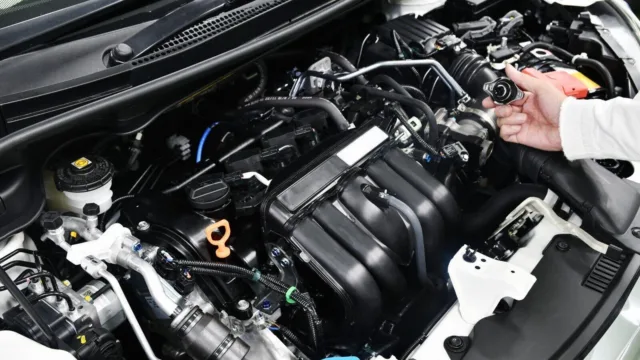
For a beaten-down European car industry, the news that Xiaomi is on its way must feel like a death knell. The Chinese phone-maker’s first electric vehicle (EV), the SU7 sedan, has been a hit in its home market. With the looks of a Porsche Panamera at the price of a Toyota Camry, it earned rave reviews from Jim Farley, CEO of Ford, and sells for as little as $30,000. Xiaomi will start shipping the car to Europe from 2027, its president told investors last week, adding that fans in the UK and Germany are already importing models on the grey market. An SUV-styled companion, the YU7, has been selling out in China.
It’s an alarming prospect. European automakers’ China businesses have struggled for several years, while EU tariffs seem to have done little to dim the appeal of imported Chinese EVs. Xiaomi is at times worth more than Volkswagen, BMW and Mercedes-Benz put together. So is domestic market-leader BYD.
Is there any hope for the continent that invented the automobile? Well, yes. But the continent’s carmakers can’t afford any missteps.
Also Read: Imitation game: Can Big Auto emulate Xiaomi’s EV strategy?
The first lesson is Chinese carmakers aren’t quite as scary as the hype. With taxes included, the average SU7 in the first half of the year sold for about $40,000. That’s pretty close to what you’d pay for a US-built Tesla Model 3, a peer competitor whose base models come in at $35,000 including EV tax credits, and $42,500 without them.
The US giant also matches its Chinese rivals in terms of profitability. Exclude the value of government subsidies and regulatory credits, interest income and other non-operating businesses, and BYD and Tesla made roughly the same profits from operations last year—$4.9 billion for BYD, $4.3 billion for Tesla (though BYD sold twice as many vehicles).
Why, then, are legacy carmakers struggling? A big factor is that they are still slow-walking the switch from internal combustion engines (ICE) to electric drivetrains. On paper, the R&D budgets Europeans are using to shift to batteries far outstrip their Chinese rivals. The $23 billion dedicated by VW alone last year was about the same as the entire listed Chinese auto industry.
But that overstates how much money is going into the only bit of the market that’s been growing since 2017: EVs. There’s still plenty of capital being ploughed into the declining engine business, limiting the amount dedicated to the future. About a third of VW’s R&D spending goes into combustion engines, and that will continue for the foreseeable future. Mercedes will redirect spending back to its engine division after disappointing EV sales. That looks fatally myopic, considering the 24% jump in European EV sales so far this year.
Also Read: Mint Quick Edit | BYD versus Tesla: Let merit decide pole position
That leads to the second part of the problem. Automakers put about 10% to 12% of their revenues each year into R&D and capital investment as a long-term bet on growth. If sales volumes are increasing, the spending will be easy to bear. If they fall, however, it gets spread over a shrinking number of vehicles. Western automakers’ post-pandemic strategy of selling a smaller number of more costly but profitable ICE cars has been disastrous. Sales volumes at VW and Mercedes last year were down 18% and 29% respectively, relative to 2019. As a result, each car has to bear a rising sum of depreciation and amortization costs. Such per-vehicle expenditures ran at $3,600 for VW last year; at China’s Geely Automobile Holdings, it was just $600.
But there’s still hope for Western carmakers. Most of the Chinese EVs wowing Europeans with their sleek styling were developed by designers poached from Europe’s own car industry—BYD’s Wolfgang Egger, an Audi and Lamborghini veteran, SAIC’s Jozef Kaban, who worked on the Bugatti Veyron supercar. Kai Langer, responsible for BMW’s EV line-up, announced a move to Xiaomi earlier this month. That talent can be wooed back.
Also Read: The West’s being left in the dust by the rest’s rapid adoption of EVs
There are also promising new models already in the works—from VW and Renault’s Cupra and Dacia brands, to Ford’s promise of a ‘Model-T moment’ led by a $30,000 electric pickup. The first of VW’s planned fleet of battery factories will start within months, providing cheap power for new models in the ID range priced well under $30,000 and due to go on sale from next year. BMW has arguably been the most successful legacy carmaker to go in for electrification, with nearly one in five of its sales in the first half of the year fully electric, rising to about one in four if you include plug-in hybrids.
As recently as 2020, even BYD sold more engine-powered cars than electric ones. It’s not too late for European rivals to catch up—but first, they have to decide whether they want to accelerate towards a battery-powered future or keep grinding their gears in reverse. ©Bloomberg
The author is a Bloomberg Opinion columnist covering climate change and energy.









